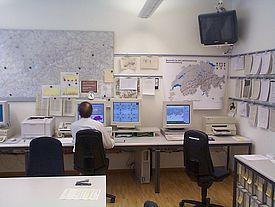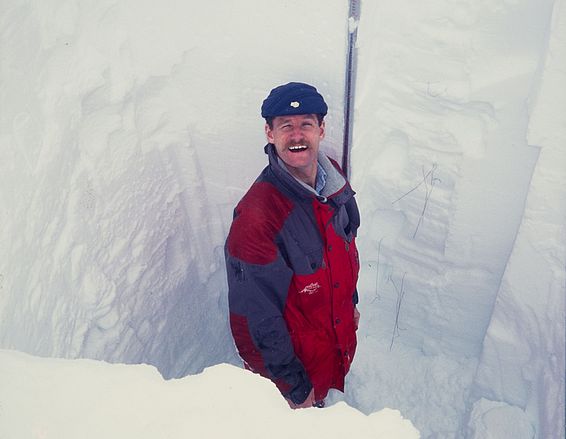15.02.2024 | Jochen Bettzieche | SLF News
Thomas Stucki is head of the avalanche warning service at the WSL Institute for Snow and Avalanche Research (SLF). In this interview, he recalls the avalanche winter of 1998/99. Then aged 31, it was his third winter as a member of the avalanche warning team.
Mr Stucki, given the amount of snow that fell in the winter of 1998/99, did you and your colleagues even manage to get to work?
Those who lived near the institute were fine. I lived a little further away in Frauenkirch so I always had a bag with some spare clothes with me in case the road was closed. Early one morning, while I was still at home, the head of the Davos community avalanche service called me to discuss the avalanche situation. He told me he was about to shut the road to Frauenkirch. I set off for the SLF straight away and was able to stay with a colleague for a few days.
Find out here what other SLF employees experienced in the snowy winter of 1998/99 and what insights they gained.
Were you still able to work as usual?
For the most part, yes – although we published more avalanche bulletins than usual and needed extra staff to cope with all the inquiries we received, among other things. Also, the many reports of avalanches reaching valley floors had to be recorded. There was less snowpack information than usual because the observers' radius of action was severely limited. Some areas ended up with five to eight metres of fresh snow. Those are huge quantities. And it was dangerous. Since the introduction of the five-part European danger level scale in 1993, it was the first time we'd used level five over a wide area and an extended period. Another exceptional thing was that, at the end of the third period of precipitation, we did reconnaissance flights with helicopters. A few memorable images from those flights have remained with me.
Can you describe them?
The size of the avalanches was awe-inspiring, and many of the avalanche barriers were buried in snow – it's a good thing there wasn't even more snow. Also, some of the terrain looked a little different from usual because there was so much new and drifted snow.
How did the avalanche warning service work back then?
We'd introduced a few innovations over the previous two winters: a three-person bulletin team, bulletins issued at 5 p.m. as a 24-hour forecast, the first regional avalanche bulletins for certain areas at 8 a.m. to condense the information in terms of space and time. We also had a new joint product with MeteoSwiss, the early warning for snow and avalanche danger. We did use computers to display the data in the database, but much of our work involved paper and coloured pencils. A lot of information came in by fax. We would often exchange information with regional avalanche services by telephone.
So the phone lines were working?
Oh yes. We even had mobiles by then, although they weren't smartphones. That reminds me of something else: in the house of the colleague I was staying with, there was only one spot with mobile reception, and that's where the on-call phone always was – hard to imagine today!
Are we ready for the next "avalanche winter"?
If such a scenario were to occur today, it would definitely still be challenging because we have little experience with exceptional, rare avalanche situations. But I have no doubt we would cope.
Contact
Copyright
WSL and SLF provide image and sound material free of charge for use in the context of press contributions in connection with this media release. The transfer of this material to image, sound and/or video databases and the sale of the material by third parties are not permitted.

